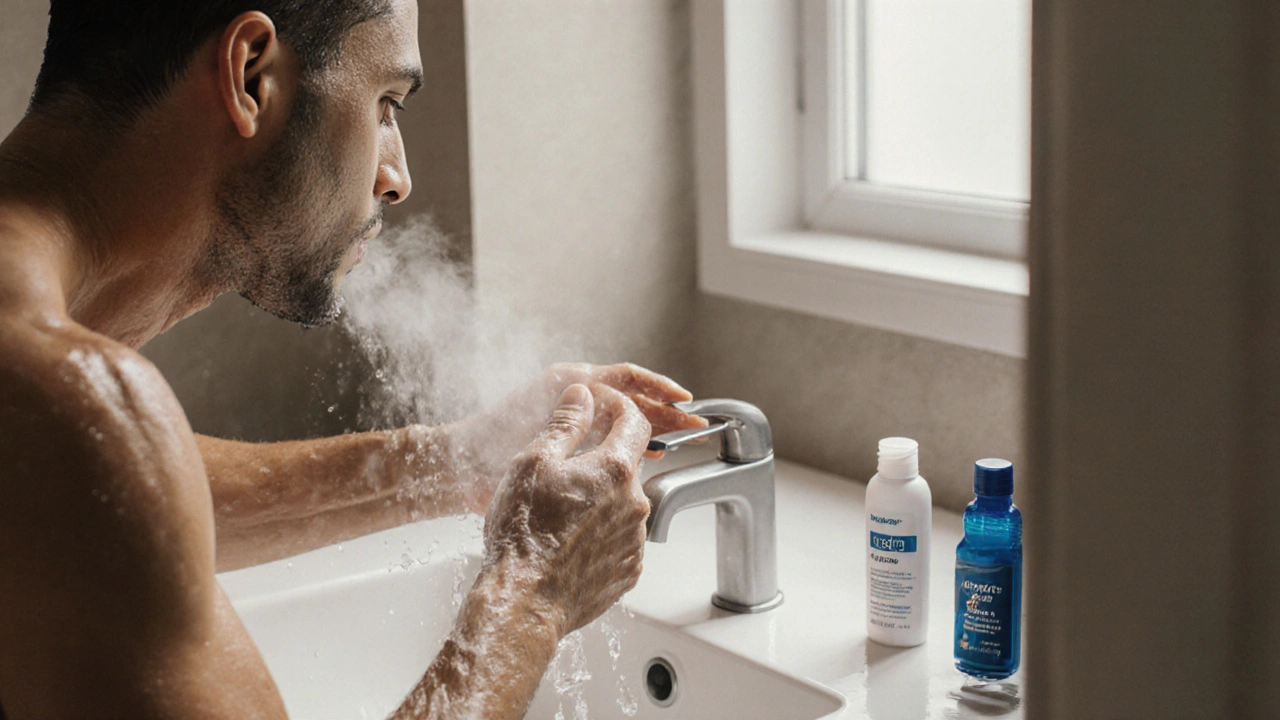Jak často si holit obličej: pravidla pro hladkou pokožku bez podráždění
Zjistěte, jak často opravdu potřebujete se holit obličej, aby jste vyhnuli podrážděním a udrželi zdravou pokožku. Praktické rady pro muže s citlivou i normální pokožkou.
When you shave your face, you’re not just removing hair—you’re triggering a physical reaction in your skin. holení obličeje, proces odstranění chloupků na obličeji pomocí britvy, elektrolytického strojku nebo depilačního krému. Also known as očesávání obličeje, it’s a daily ritual for many, but it doesn’t have to mean redness, bumps, or irritation. If your skin turns red or feels tight after shaving, it’s not because you’re doing it wrong—it’s because you’re missing key steps in post-shave care.
The skin on your face is thinner and more sensitive than on your legs or underarms. That’s why even a clean razor can cause micro-tears, especially if you shave dry, use old blades, or skip moisturizing afterward. podráždění po oholení, běžná reakce pokožky na mechanické nebo chemické podráždění během nebo po oholení shows up as redness, burning, or tiny bumps. It’s not acne. It’s not allergies. It’s your skin’s way of saying: "I need hydration and rest." pokožka po oholení, oblast obličeje, která prochází fází zvýšené citlivosti po odstranění chloupků needs different care than your skin before shaving. You don’t need fancy serums or expensive creams. Water, a gentle moisturizer, and avoiding alcohol-based products are the real game-changers. Many people think shaving makes hair grow back thicker—but that’s a myth. What happens is the hair grows back with a blunt tip, making it feel coarser. It’s not more hair. It’s just the way it feels.
červený obličej, příznak podráždění nebo zánětu pokožky po fyzickém nebo chemickém ovlivnění, často vznikající po oholení doesn’t mean you have to stop shaving. It means you need to adjust your routine. Start by using lukewarm water, not hot. Hot water strips natural oils and makes your skin more vulnerable. Use a fresh blade every 5–7 shaves. Dull blades pull hairs instead of cutting them cleanly, which leads to irritation. And never skip moisturizer. Even if you have oily skin, a lightweight, fragrance-free gel with aloe or niacinamide helps calm the skin. Avoid aftershaves with alcohol—they dry out your skin and make redness worse.
If you’ve tried all this and your skin still reacts, it might not be the razor—it’s the product. Some face washes, toners, or even sunscreens can make your skin more reactive after shaving. Keep a simple routine: clean, shave, moisturize. No extras. Let your skin recover. And if the redness lasts more than a day or turns into bumps that itch or hurt, it’s time to look at péče o pleť po oholení, soubor kroků a produktů navržených k uklidnění a obnově pokožky po odstranění chloupků more seriously. You might need to switch to electric shavers or try a different technique altogether.
Below, you’ll find real-life tips from people who’ve been there—how they stopped the burning, what products actually helped, and what they wish they’d known before their first bad shave. No fluff. No marketing. Just what works.

25 listopadu
Zjistěte, jak často opravdu potřebujete se holit obličej, aby jste vyhnuli podrážděním a udrželi zdravou pokožku. Praktické rady pro muže s citlivou i normální pokožkou.